Hi! I’m Taiki!
I am trying berimbolo drills these days.
Through that experience, I’m starting to understand what berimbolo is, what modern jiu-jitsu is in my own way.
This time I present my research result.
I’ll show you my research as a article.
Contents
Berimbolo map shows the transition of hook
In order to practice berimbolo, I watched and read many instructional DVDs, books and YouTube videos. Those, made by Mr. Koji Shibamoto or Mr. Ichiro Kaneko, are my favorites.
They see and explain berimbolo structurally from the aspect of the hook types. For example de la riva hook, X hook, butterfly hook, twister hook and so on.
This remarkable feature can be easily found in the table of contents in their DVDs or books.
Based on their DVDs and books, I took a guess at the inside of good berimbolists’ brain. As a result, now I suppose that three important points exist in their brain.
The three ideas are as follows:
- to understand the characteristic of hooks
- smooth moves to change hook to hook
- routes to back-take or leg-drag
Using the methods called “state transition diagram“and “value chain” used in computer science and business management fields, I made a chart which I call “berimbolo map” to comprehend these ideas easily.
This is the example of “berimbolo map”.
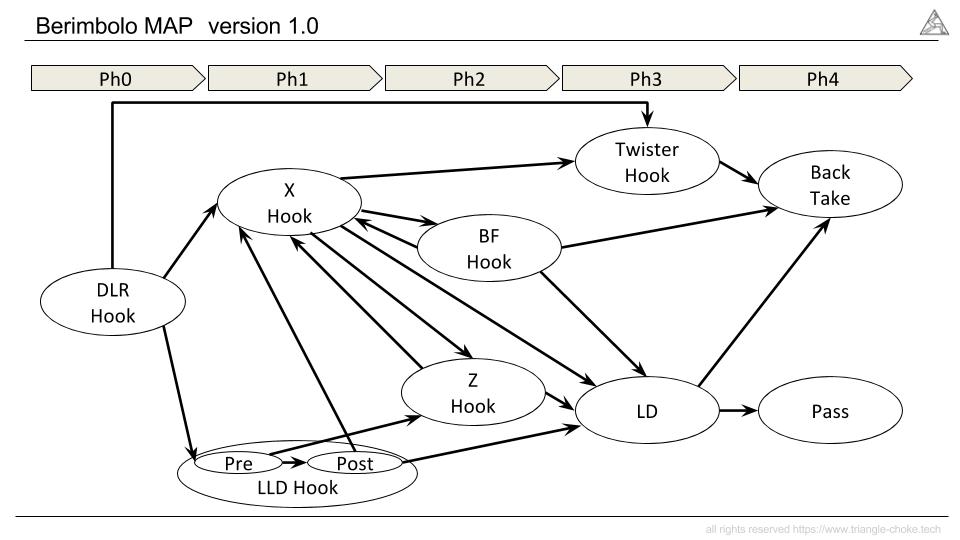
Berimbolo map guide:
- I regard back-take and guard-pass as phase 4(hereinafter, this is called Ph4) of berimbolo map. (And Ph4 is berimbolo user’s goal)
- As the phase number of state gets bigger, the berimbolo user gets closer to the goals.
- The states is based on which type of hook the berimbolo user keeps.
- If the difference of phase number with the state transition is big, the transition technique is difficult.
- The more states you get through before you reach the goal, the more techniques you have to use.
Of course, some people may feel it easier to make BF hook than to make X hook, and everyone has his/her own favorite transition. This map is just based on my feeling.
Now I think that how skillful someone is at modern jiu-jitsu is decided by the variety of state transitions, how smoothly to transit and how many routes he/she has to back-take or pass.
I suppose this is what modern jiu-jitsu is!
The definition of hook type
To understand this berimbolo map, I define each hook type as follows.
(Special thanks to Mr.Sanpei and Mr.Sato,Triforce Gotanda for the pictures)
Ph0:De La Riva Hook(DLR Hook)
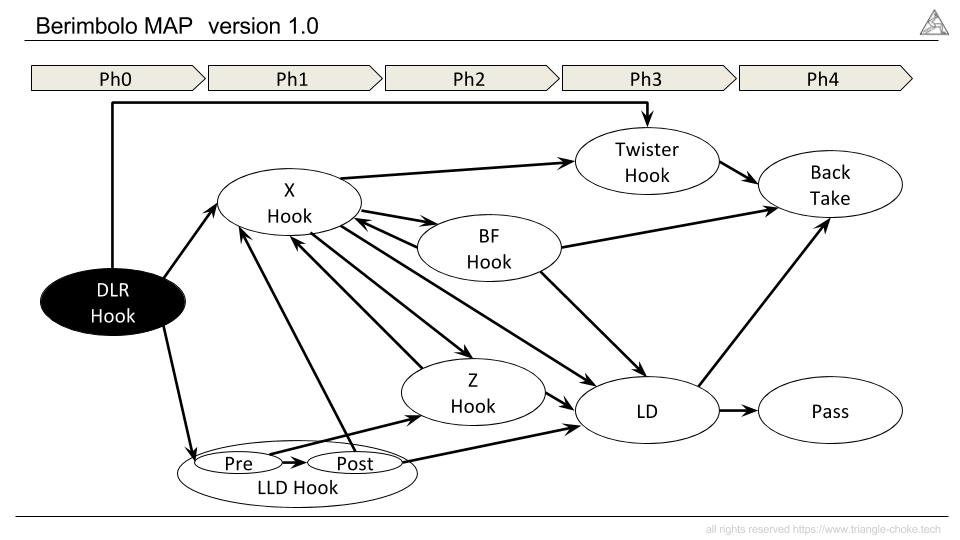
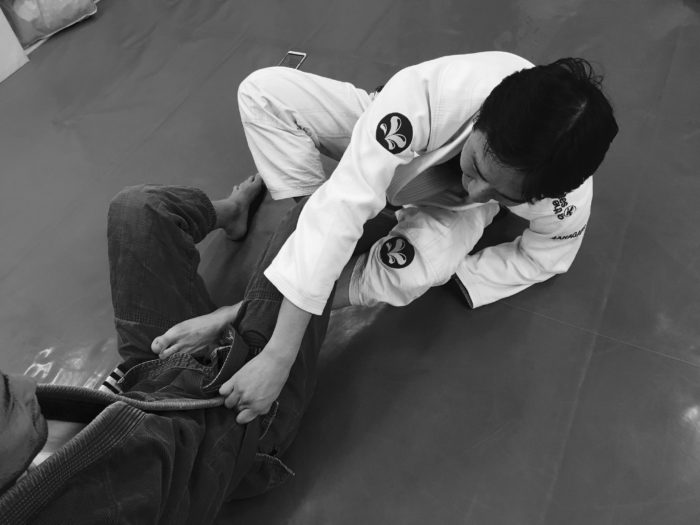
Ph1: Lying Leg Drag Hook Pre(LLD Hook Pre)
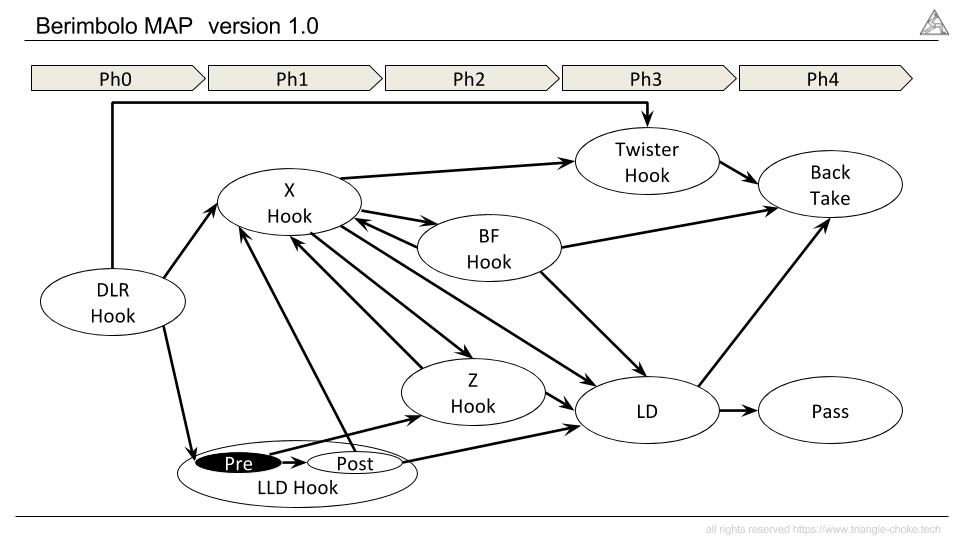
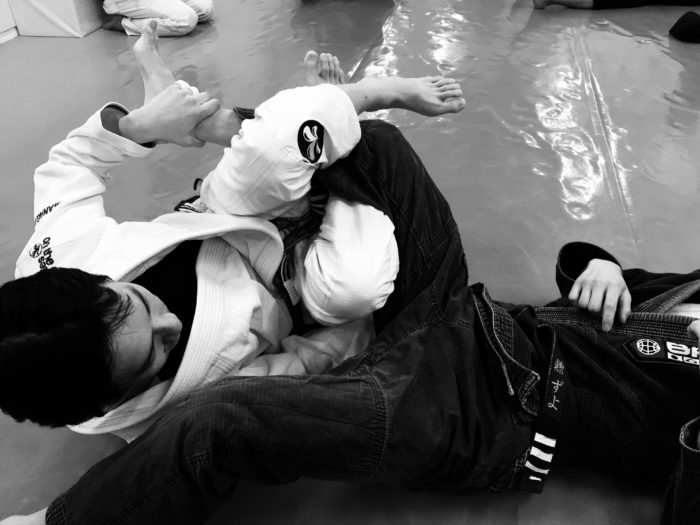
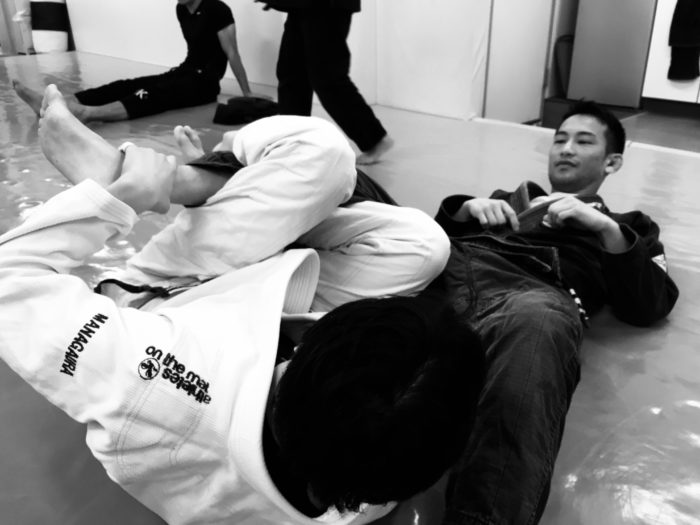
Ph1: Lying Leg Drag Hook Post(LLD Hook Post)

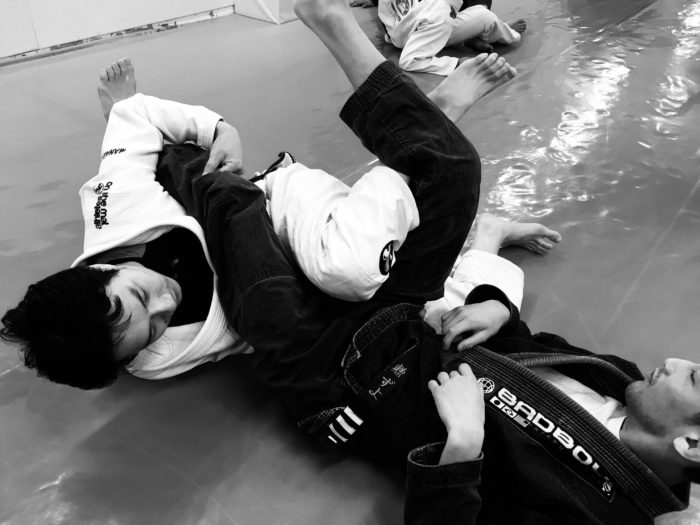
Ph1:X hook

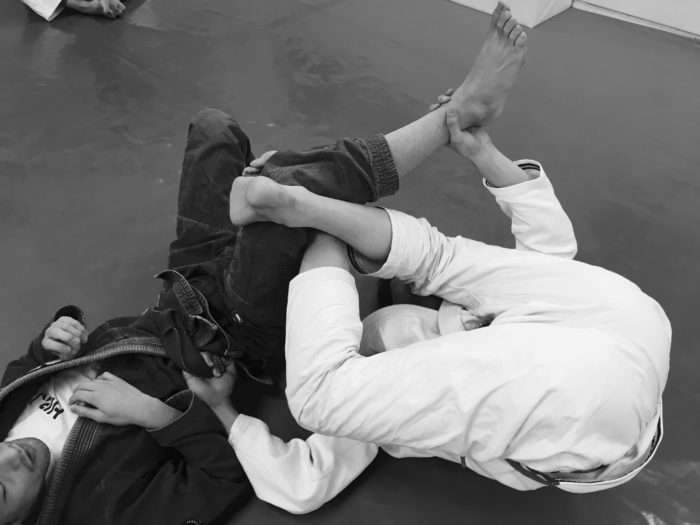
Ph2: Butterfly Hook(BF Hook)
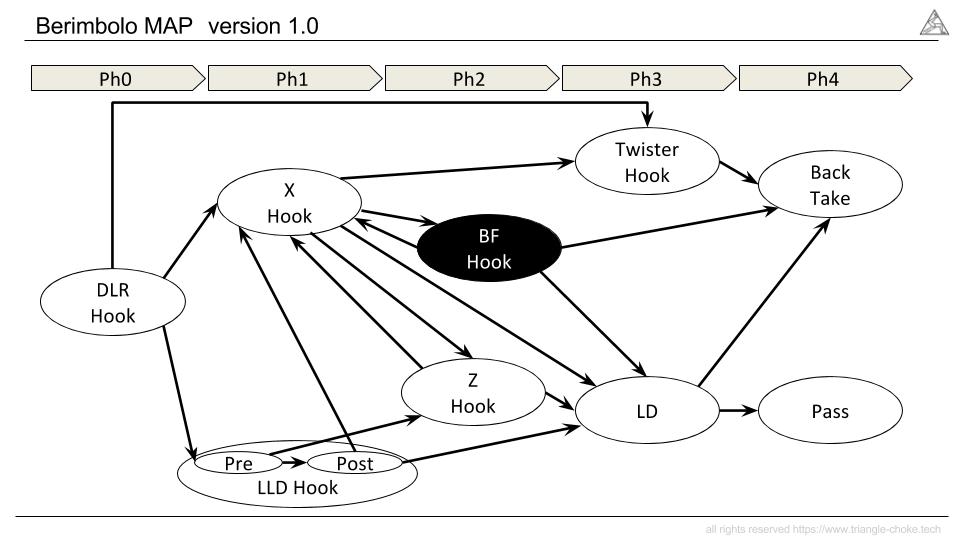
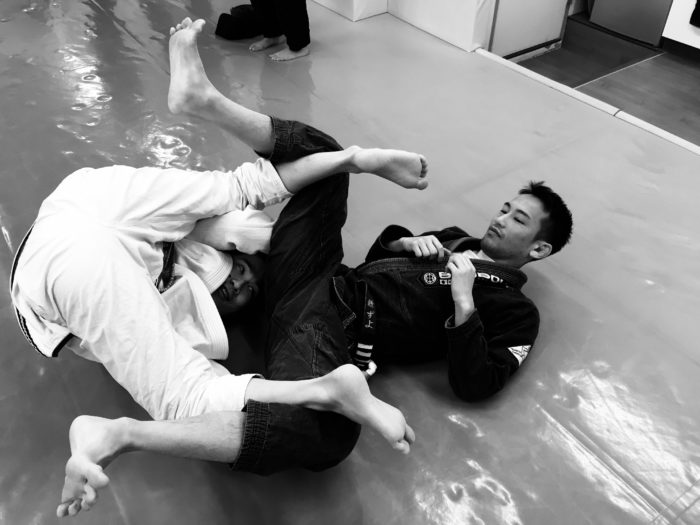
Hook your legs behind the opponent’s inside of knees and grip the belt.
Ph2: Z hook

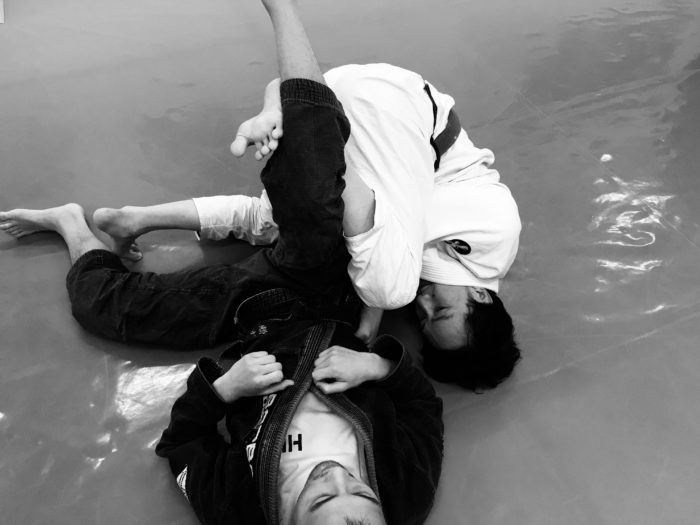
Hook your leg outside of the opponent’s leg. The shape of your leg looks like Z. Watching this video is useful to understand this concept.
Ph3: Twister Hook

I forgot to take a picture, so I picked out this video from instagram. Is this more useful to understand than my pictures? 🙂
There are other hook types used in berimbolo such as Far-Side Hook. However too much information overwhelms and confuses us. This time I finish the instruction of hook types.
Aside to that my berimbolo map
In fact, I cannot move freely on the above berimbolo map. My berimbolo map is like this. I can use the X hook well but cannot use the BF and Z hook effectively. I’m practicing these techniques now.
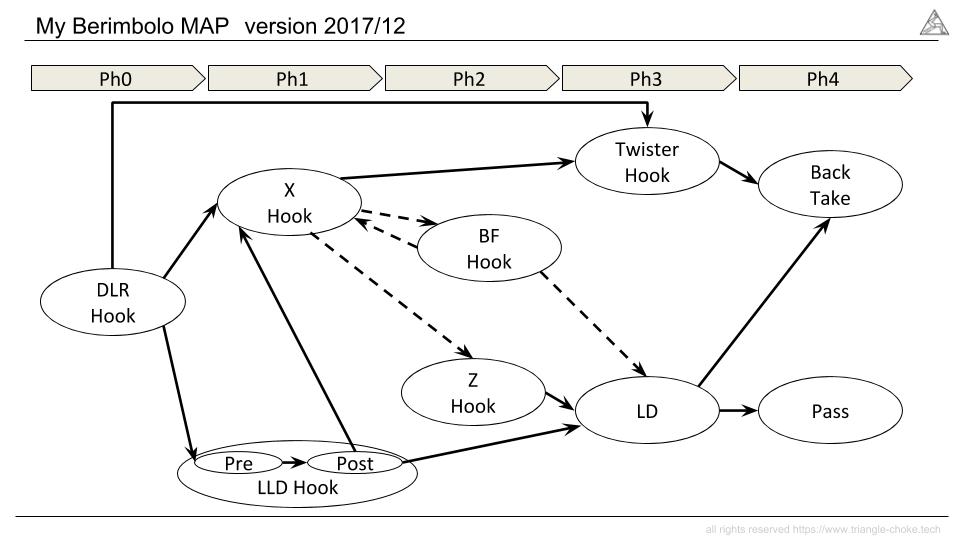
Probably, the berimbolo map of berimbolists, like Mr. Shibamoto, Mr. Kaneko, Miyao brothers, Mendes Brothers and Ganni Grippo, is as complex as the train route map of big city, like Tokyo, New York, London.
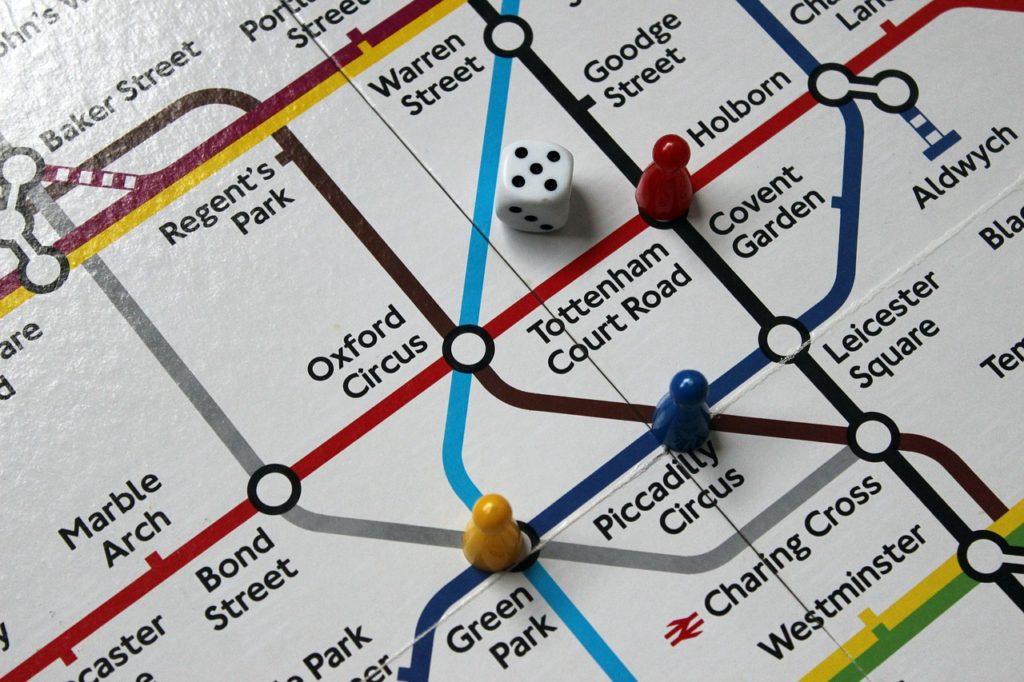
My berimbolo map is as simple as that of Southeast Asia.
Like this.
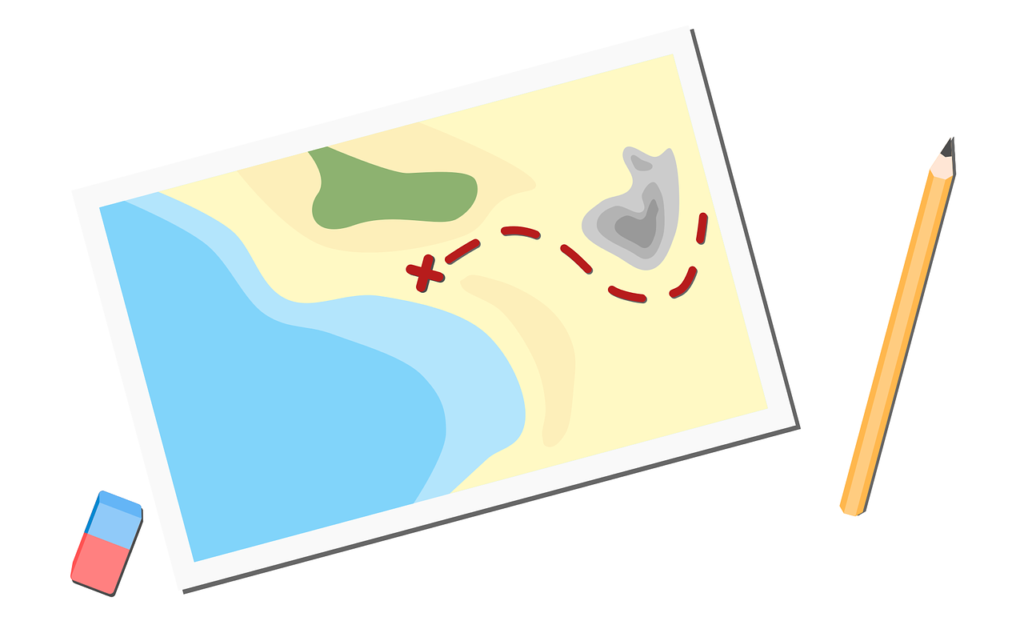
Watch technique videos with the berimbolo map
Case1:DLR hook→Twister hook→back take
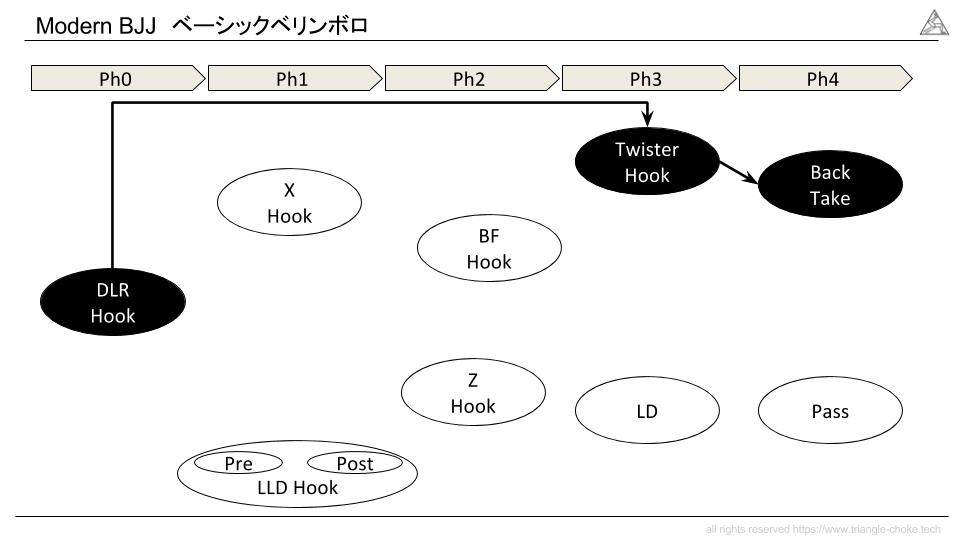
This is the basic berimbolo 2017.
It is different from the basic berimbolo some years ago. Mr. Shibamoto also introduces it as a basic berimbolo in BERIMBOLO Z, his instructional DVD. Now this technique is regarded as basic by berimbolists.
Case2:DLR→LLD Pre→LLD Post→LLD
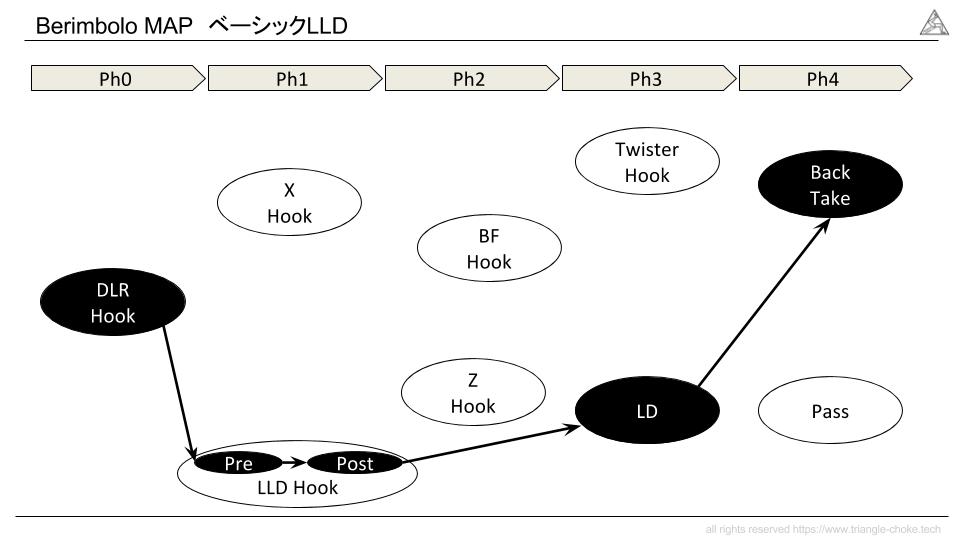
This is the standard lying leg drag(LLD).
He changes the hook types from the DLR to the LLD pre, post and complete leg drag(LD) to get the back position. If this video is too fast to make out the technique, I recommend that you slow down the playback speed. You can watch the hook transitions thoroughly.
Case3:DLR→BF→LD

From the DLR hook, he makes the BF hook and then do the leg drag. He does the leg drag from both sides. If you can use these techniques smoothly, you may be an intermediate berimbolist.
Case4:DLR → Z →X →Twister →Back Take
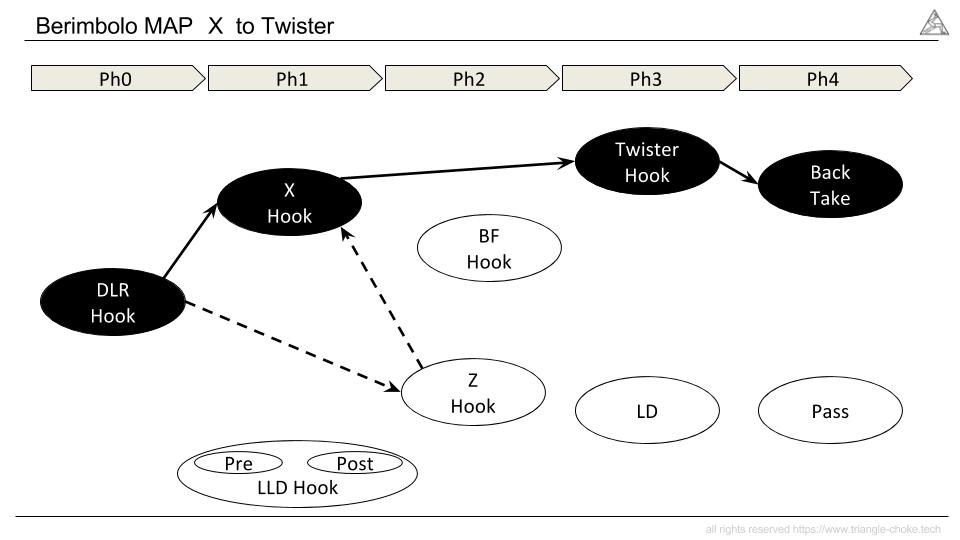
In this video of Mr. Shibamoto, he tries near side leg drag but the opponent prevents.At this moment his hook looks like the Z hook. Then he makes the X hook and then the twister hook and gets the back position.
This technique is very complex. It may be an advanced techniqiue.
Summary: Let’s develop our own berimbolo routes!
One reason for the difficulty of the berimbolo is the variety of the hook types.
If you don’t understand structurally which hook is strong and how to reach the goals from each hook, you may feel, “I can’t understand berimbolo at all. Too complex!”
But it also means if you organize these concepts and what you can really do in the berimbolo map, you don’t have to think too much!
In fact, through writing this article and watching many videos, I gradually understand berimbolo ideas such as “Oh, I should use Z hook in this position!” Watching the matches of Miyao brothers, I finally got to grasp what they do. Moreover, in Mendes Online I got better understanding of the technique which I studied directly in his seminar.
Unfortunately, I haven’t found a magical way to master berimbolo without repeating the drills. Repeating the drills as hard as kamikaze spirits is the only way to master “modern” jiu-jitsu.
I’m developing my berimbolo routes now, too. Some routes are getting wider. Some routes are not in spite of my efforts. Let’s practice, develop our own berimbolo map and master berimbolo.
Developing your own berimbolo map is the essence of modern jiu-jitsu!
That’s all from my labo.
P.S. Mr. Kaneko’s comment
Thankfully Mr. Kaneko made a comment on this article on Facebook. I introduce it. I translated it into English.
The four major hooks appeared five years ago, when Miyao brothers made the berimbolo famous in Japan.
At that time, few people understood the BF or twister hook in Japan. I repeated the drills everyday to get better understanding.
In 2013, almost all top competitors had certain level of knowledge about the four major hooks.
In this article, the transition between the four major hooks is explained simply using the chart. Very easy to understand!
Mr. Kaneko repeated the drills, too! Let’s repeat the drills!
References
DVDs・books:
Brazilian Jiu-Jitsu Berimbolo
EXTREME MODERN CONCEPT BERIMBOLO SIDE
Carpe Diem Jiu Jitsu
BJJ SPIRITS vol.8
online classes:
BERIMBOLO Z
Art of Jiu Jitsu
seminars:
the berimbolo&LLD seminar, Mr. Koji Shibamoto
the berimbolo seminar, Mr. Tmoyuki Hashimoto
Mendes brothers’ seminar